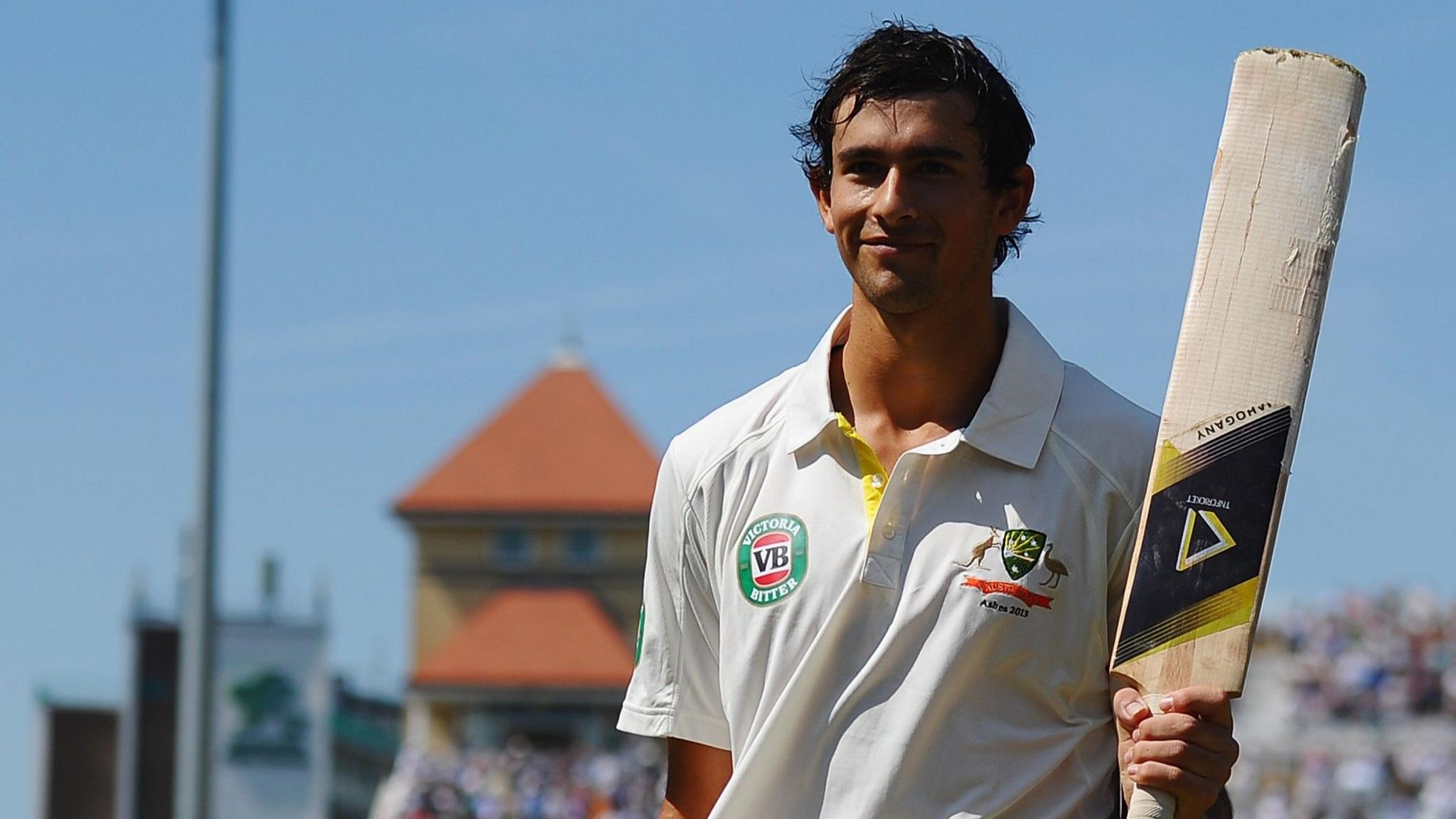
-
-
10 Comments
Traveling through Australia is unique.
Despite the numerous challenges and obstacles faced while competing in international cricket in various locations, nothing quite parallels the frenzy and stress of traveling globally to partake in the Ashes series in Australia.
I have felt both sides of the coin: the elation and satisfaction of triumphing in the 2010-11 series, relishing the atmosphere of the storied wooden lockers in the dressing room at the Sydney Cricket Ground, enveloped in cigar smoke and loud music celebrating late into the night.
The experience was drastically different three years later, at the conclusion of the 2013-14 series, when the silence in the very same dressing room was so profound you could hear a pin drop.
All eyes were downcast in deep contemplation as Mitchell Johnson and the Australian team overwhelmed us for two months.
Beyond the key moments and confrontations on the field, the challenges of the tour begin well before boarding the flight.
For months, or sometimes even years, thoughts and anticipation focus on the next away Ashes series. A journey to Australia poses a chance for a group of English players to secure cricketing legacy, or face a downfall. This reality is recognized by everyone in the locker room.
Players will find it impossible to check their phones without encountering some form of Ashes-related content. In 2010, at the age of 21, I was blissfully unaware of what I was getting into.
It was not only my debut in Ashes cricket but also my first tour to Australia. My innocence allowed me to embark on this adventure with my excitement levels so high, it was impossible not to relish the thrill of realizing a childhood dream so early in my career. Achieving this mindset is a crucial first step towards having a successful tour.
I documented my experiences during my Ashes tours, and my entry the night before the inaugural Test of 2010 revealed my inability to rest due to the anticipation of what promised to be the best day of my life the following day, a mindset I strived to maintain for the duration of my career with varying degrees of success.
How can a contemporary player shield themselves from the scrutiny that comes with this series?
This team will likely head to a golf course, set aside their phones, and immerse themselves in working towards a scratch golf handicap for four hours. Despite receiving criticism for enjoying golf while on tour, there is considerable rationale behind this mindset.
During the 2013 tour, I didn’t provide myself the chance to escape. Instead, I trained relentlessly, pushing my physical limits, convinced this was the sole path to reclaiming my rhythm and form.
I concluded the tour with my mind so overwhelmed that I was deemed unfit for selection. Finding balance is essential. Australia is a stunning country with plenty to offer that is not related to cricket. Embracing this and enjoying time spent down under can provide valuable perspective.
As soon as you disembark from the plane, it becomes evident that it’s not merely a battle between you and the Australian cricket team, but rather a contest against a significant portion of the nation.
Customs officials sport no smiles and demand to inspect your cricket shoes to ensure you’re not importing any undesired soil. You are required to unpack your cricket bag down on your hands and knees in the arrivals area, rifling through your comfortable bowling spikes from the English summer. If there’s even a speck of dirt on them, you must clean them thoroughly. Welcome to Australia.
I once faced inquiries about why I had a Terry’s Chocolate Orange, questioning whether it contained actual fruit. I was unaware that they hadn’t yet infiltrated the Australian market.
Once your shoes are cleaned and customs is cleared, you step into the arrivals hall to be met by news crews, inquiring if you’re prepared to face being overpowered by Australia for three months.
Displaying a smile and a sense of humor can help soften public perception of you.
There were instances when we would don our headphones and disregard the cameras, which was a guaranteed way to be labeled as ‘arrogant Poms.’
Realistically, who desires to engage in conversation immediately after a 24-hour flight?
Most importantly, the objective is to earn the respect of the Australian public, achievable only through performances on the field.
In the inaugural Test of 2010, we fell behind by 211 runs in the first innings. 35,000 Australians were stomping their feet in the expansive concrete stadium, clamoring for English defeat as they anticipated yet another Australian victory.
Alastair Cook, Andrew Strauss, and Jonathan Trott notably countered the noise, accumulating 517-1 in our second innings. The Test ended in a draw, yet it felt as if we had emerged victorious.
You could sense the shift in sentiment towards us. Those who had relished the idea of our impending annihilation began to express respect for our resilience and admiration for the competition.
While preparation is essential, living in the moment is equally important. Countless England teams have ventured to Australia with preconceived notions of the conditions they would encounter.
The ability to interpret circumstances and make adjustments is vital. During the 2010 match at the Melbourne Cricket Ground, David Saker, the England bowling coach, firmly believed that bowling first was the key to winning the Test.
We dismissed Australia for 98 runs and triumphed by an innings. Bold decision-making will benefit England in this regard.
Ultimately, luck plays a significant role in achieving success in Australia.
In 2010, Australia lacked a stable spinner, there were uncertainties surrounding the legendary Ricky Ponting as he approached the twilight of his career, and the seam bowlers had significant questions hanging over them.
Australia announced a squad of 17 players for the first Test, which was more athletes than we had for our entire three-month expedition in the country. Capturing Australia during a period of transition can be crucial.
Currently, injuries to Pat Cummins and Josh Hazlewood provide England with a chance to confront an Australian team that may be showing its first signs of frailty since 2010.
There are numerous hurdles associated with partaking in an away Ashes series, both on and off the pitch.
The stars might just be aligning for England to seize a genuine opportunity to triumph in Australia for the first time in 15 years.
The Ashes: Australia v England
21 November 2025 – 7 January 2026
In-play clips and highlights on iPlayer, BBC Sport website and app. Ball-by-ball commentary on BBC Sounds, BBC Radio 5 Sports Extra and the BBC Sport website and app, which will also have live text commentary and daily features and analysis
Related topics
- England Men’s Cricket Team
- The Ashes
- Cricket
-
The ascent, fall, and resurgence of Steven Finn
-
4 May 2023

-
-
‘It felt like God’s hand on my brain’ – the day England were humbled by teenager
-
10 hours ago

-
-
Receive cricket news directly to your phone
-
16 August

-















